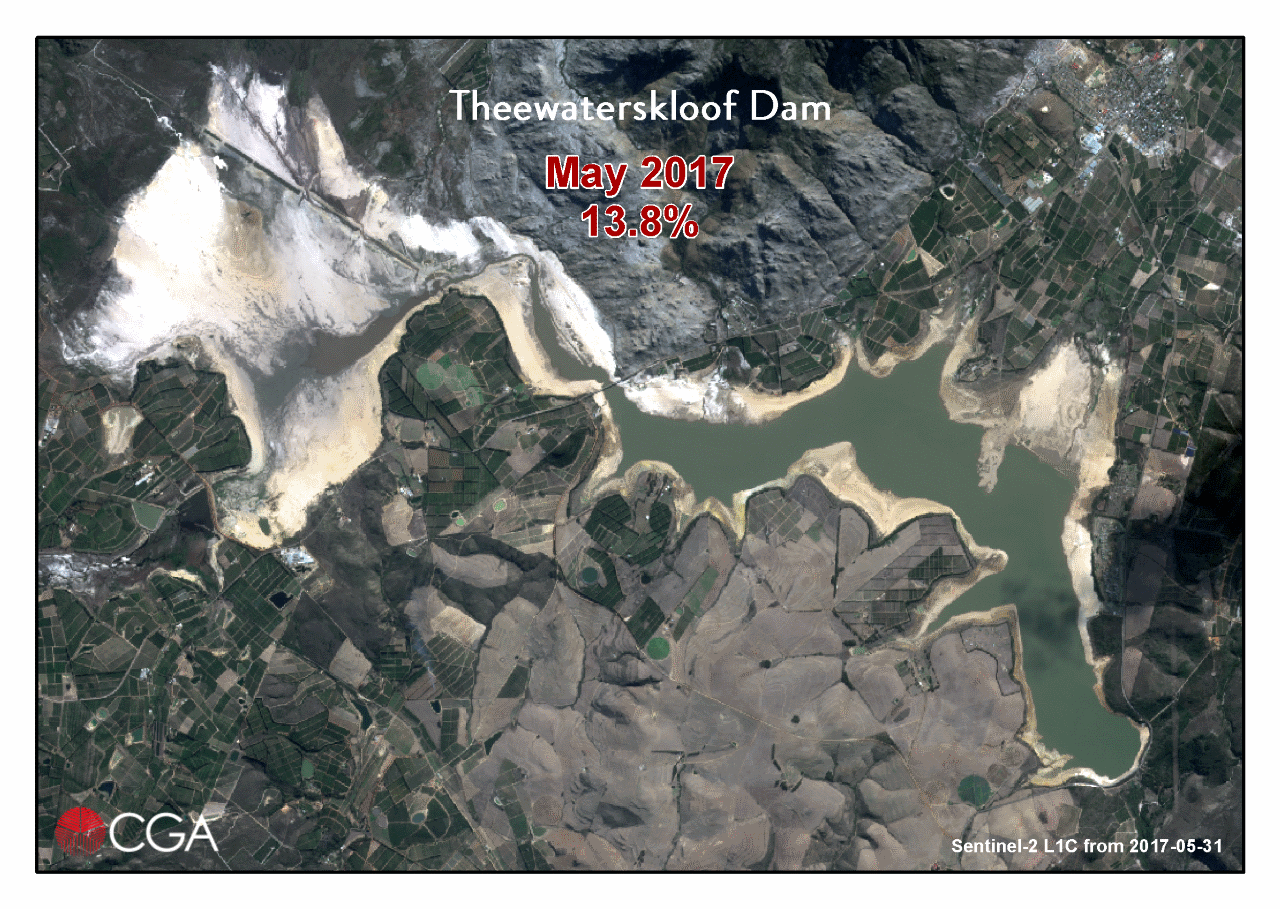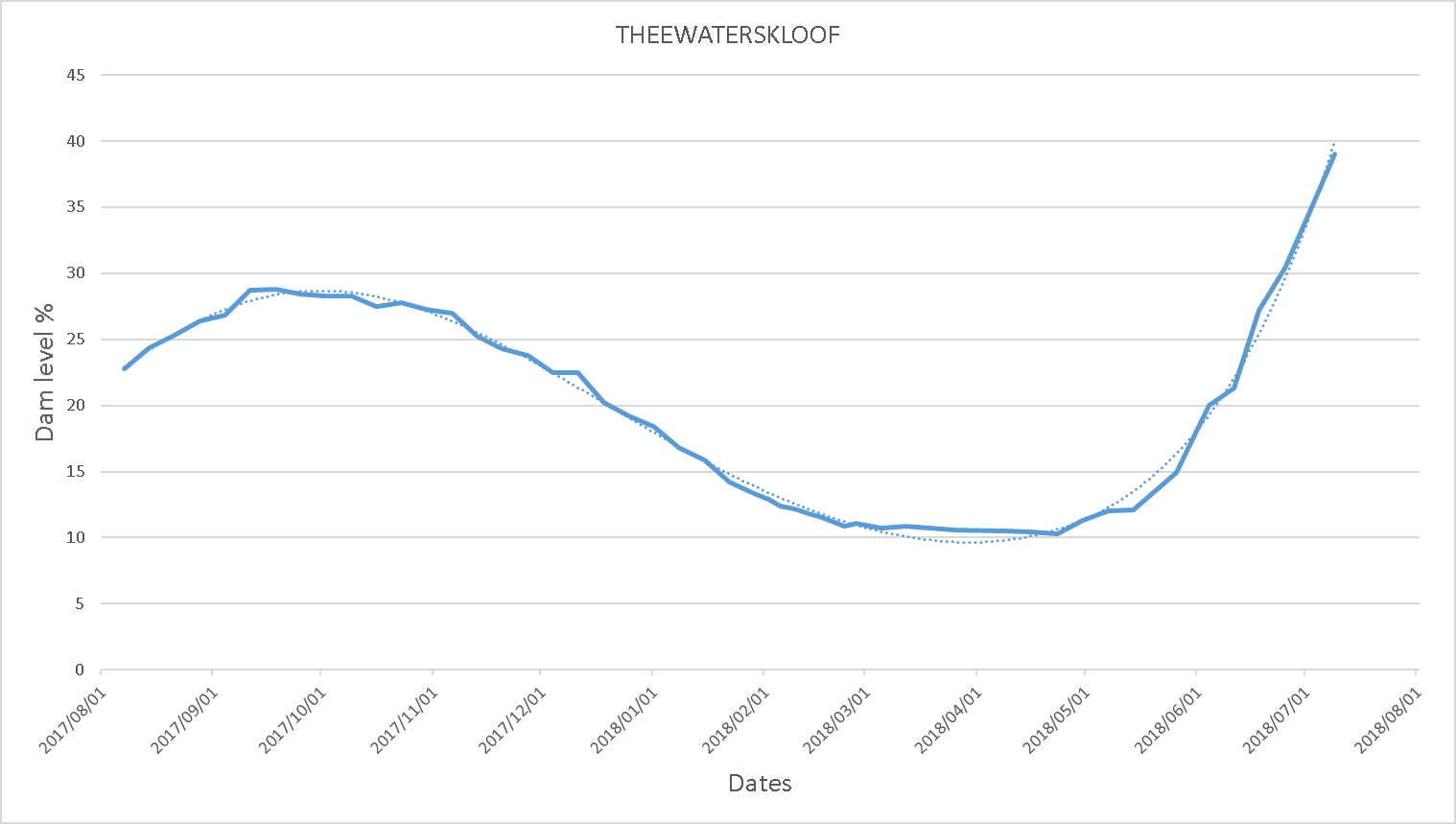With the good rains in May and June, Theewaterskloof is on its way to recovery.
The biggest dam in the Western Cape Province, Theewaterskloof, was sitting at 39% capacity on Monday 9th July 2018. This is double of what it was last year at the same time (19.5%).
The GIF below is a time-series of 14 Sentinel 2 images dating from May 2017 to July 2018.

Images obtained through Sentinel Hub – EO Browser
The graph below shows the fluctuation of the water level of Theewaterskloof over the past 12 months, starting at 22.8% at the beginning of August 2017. It sunk to a minimum of 10.3% in April this year, but has now recovered to 39.3% (the highest level for the year).

Other dam levels in the region have also increased substantially. Official readings released by the City of Cape Town on Monday the 9th of July are as follows:
- Berg River: 83.1%
- Steenbras Lower: 55.5%
- Steenbras Upper: 99.8%
- Theewaterskloof: 39%
- Voelvlei: 51.4%
- Wemmershoek: 83.3%
“The prevailing water restrictions will remain in force until our dam levels reach more than 85% as a collective average of the dams in the Western Cape,” ~ The Department of Water and Sanitation
This brings the total water storage levels of the major dams in the Western Cape to 53.3%, more than twice as much as the official reading for July 2017.
In an official media statement released on the 9th of July the Department of Water and Sanitation (DWS) expresses its joy at the recent rains and the increase in water security of the Western Cape Province, but notes that the need for saving water remains. The DWS further goes on to say that “The prevailing water restrictions will remain in force until our dam levels reach more than 85% as a collective average of the dams in the Western Cape.”.
Related links:
